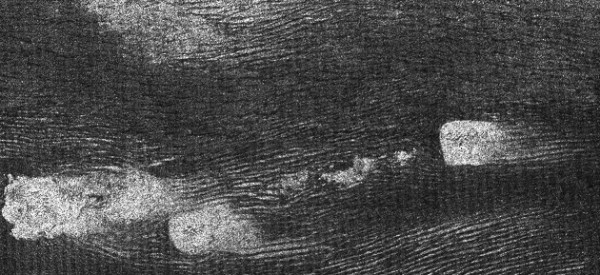Gigantic Dunes of Titan Explained: Blame it on Violent Methane Storms
| Ana Verayo | | Apr 14, 2015 06:26 AM EDT |
(Photo : NASA/JPL-Caltech/ASI) Dunes are mostly an equatorial phenomenon on Titan, and the material forming them may be solid organic particles or ice coated with organic material.
Scientists reveal that extremely rare tropical methane storms could provide clues as how these bizarre, gigantic dunes were formed on Titan, Saturn's largest moon.
NASA's Cassini spacecraft started exploring Titan in 2004 and its most remarkable discovery was a field of dunes that almost covered 15 percent of the surface of the moon and also its equator.
Like Us on Facebook
The dunes are described as massive and dark and also one of the biggest of their kind in the solar system. They're made from a unique, exotic sand of hydrogen and carbon. The dunes are a towering 330 feet and stretch some 18 to 31 miles long.
These colossal alien dunes are also one of Titan's greatest mysteries and they seem to move eastward even if models of Titan's atmosphere predict that surface winds found within the equator region should blow west.
Scientists found out that winds apparently blow east at altitudes of three miles above the dunes making high winds an important factor in sculpting these dunes.
This new study now suggests that rare methane storms are responsible for shaping the moon's surface. Clouds and storms are rare weather events on Titan but they were predicted to not have an effect on these dunes, according to lead author Benjamin Charnay from the Dynamic Meteorology Laboratory in Paris.
With these weather patterns in mind, Titan is the only moon in the solar system that possesses a thick atmosphere composed of mostly nitrogen and methane that can form clouds. During equinox, nights and days are about the same duration and this is the time where violent methane storms ensue in the tropical regions on its equator.
Computer simulations reveal that clouds can reach 15.5 miles high where the east winds blows. This interaction can produce methane storms and generate downdrafts that can flow eastward via strong gusts after reaching the surface of Titan.
These eastward gusts of winds can reach up to 22 miles per hour, or 10 times faster than Titan's common winds on its surface. Charnay says these storm gusts are equal to a hurricane on Titan.
Researchers now believe these storm gusts can provide clues about Titan's dunes, especially its shape, size and movement. Charnay also adds these long dunes formed over a period of one million years while some formed in the last 100,000 years.
This study was published in the journal, Nature Geoscience.
TagsGigantic Dunes of Titan Explained: Blame it on Violent Methane Storms, NASA, saturn moon titan, titan moon, Saturn, cassini spacecraft, dunes titan moon saturn methane storms
©2015 Chinatopix All rights reserved. Do not reproduce without permission
EDITOR'S PICKS
-

Did the Trump administration just announce plans for a trade war with ‘hostile’ China and Russia?
-

US Senate passes Taiwan travel bill slammed by China
-

As Yan Sihong’s family grieves, here are other Chinese students who went missing abroad. Some have never been found
-

Beijing blasts Western critics who ‘smear China’ with the term sharp power
-

China Envoy Seeks to Defuse Tensions With U.S. as a Trade War Brews
-

Singapore's Deputy PM Provides Bitcoin Vote of Confidence Amid China's Blanket Bans
-

China warns investors over risks in overseas virtual currency trading
-

Chinese government most trustworthy: survey
-

Kashima Antlers On Course For Back-To-Back Titles
MOST POPULAR
LATEST NEWS
Zhou Yongkang: China's Former Security Chief Sentenced to Life in Prison

China's former Chief of the Ministry of Public Security, Zhou Yongkang, has been given a life sentence after he was found guilty of abusing his office, bribery and deliberately ... Full Article
TRENDING STORY

China Pork Prices Expected to Stabilize As The Supplies Recover

Elephone P9000 Smartphone is now on Sale on Amazon India

There's a Big Chance Cliffhangers Won't Still Be Resolved When Grey's Anatomy Season 13 Returns

Supreme Court Ruled on Samsung vs Apple Dispute for Patent Infringement

Microsoft Surface Pro 5 Rumors and Release Date: What is the Latest?










